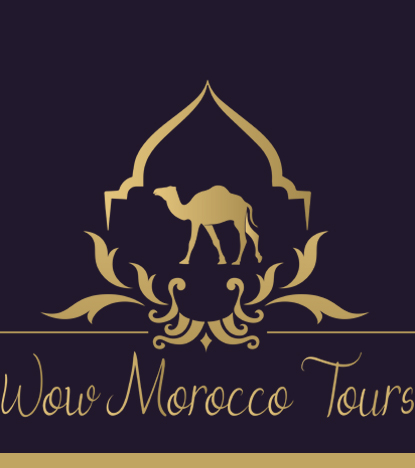
A Guide to Morocco’s Best Souks and Markets
Stepping into a Moroccan souk is like walking into a living museum one that bursts with color, energy, and centuries of tradition. These bustling marketplaces are the beating heart of Morocco’s cities and towns, where locals and travelers alike come to trade, shop, eat, and socialize. But they are more than just places of commerce; they are windows into Morocco’s soul, its people, culture, and craftsmanship.
Each Souk has its own rhythm. The air is heavy with the scent of spices cumin, cinnamon, saffron mingling with the smoke of grilled meats and the perfume of orange blossom. The sounds are just as rich: the calls of vendors, the clang of metalwork being shaped, and the hypnotic beats of street musicians echo through narrow alleyways. It’s a full sensory immersion, a place where the past meets the present in the most vivid way.
Moroccan souks are famed for their artisanal goods intricately woven carpets, hand-painted ceramics, brass lanterns, leather slippers, and natural beauty products like argan oil and black soap. But beyond the shopping, they offer something even more valuable: an opportunity to interact with local culture in a way that’s authentic, unscripted, and unforgettable.
In this guide, we’ll take you through the most famous and enchanting souks in Morocco from the iconic maze of Marrakech’s medina to the laid-back stalls of Essaouira. We’ll also share tips on bargaining, what to buy, and how to explore these vibrant marketplaces with respect and confidence. Whether you’re hunting for the perfect souvenir or simply looking to get lost in the magic, Morocco’s souks are waiting to be explored.
What to Know Before You Go
Exploring Morocco’s souks can be a thrilling adventure, but a little preparation goes a long way in making your experience smoother, more enjoyable, and respectful to local customs. Here’s what every traveler should know before stepping into the maze of a Moroccan market.
1. Bargaining is Expected — and Encouraged
Haggling isn’t just allowed in Moroccan souks — it’s part of the experience. Vendors often start with a high price, expecting the buyer to negotiate. Don’t feel shy or awkward; bargaining is a cultural ritual here. Aim to start your counter offer at about half the asking price and work from there. Keep it friendly and respectful a smile, a bit of humor, and patience can go a long way.
Tip: Don’t show too much enthusiasm for an item unless you’re ready to buy. Once you start negotiating, there’s an unspoken agreement that you’re interested.
2. Get Lost — It’s Part of the Fun
Most souks, especially in cities like Marrakech and Fes, are maze-like with twisting alleyways and countless stalls. It’s easy to lose your bearings, and that’s okay. Allow yourself to wander the most memorable moments often come from unexpected discoveries. Just be sure to keep your phone charged and download offline maps ahead of time.
3. Timing Matters
Souks are typically busiest in the late morning and early evening. Early mornings tend to be quieter, which is perfect if you want to browse in peace and chat with vendors without pressure. Afternoons bring the crowds, the energy, and chaos.
Pro tip: On Fridays, many shops may open later or close early for prayers, so plan accordingly.
4. Cash is King
Most market vendors don’t accept credit or debit cards, so carry enough Moroccan dirhams (MAD) in small denominations. ATMs can be found in larger cities near the medinas, but they might be limited in smaller towns. Keep your money secure and be discreet when paying.
5. Learn a Few Key Words
A few words in Arabic or Moroccan Darija can go a long way in building rapport with vendors. Here are some useful phrases:
Salam Alaikum – Peace be upon you (a common greeting)
Shukran – Thank you
Bsh-hal? – How much?
La, shukran – No, thank you
Even a simple greeting can open up a friendlier conversation and show that you respect the culture.
6. Beware of the “Helpful” Strangers
In tourist-heavy souks, especially in Marrakech and Fes, you may encounter people offering unsolicited help or directions. While many are genuinely kind, some may expect a tip or try to lead you to a specific shop. Be polite, but firm. If you feel lost, ask shopkeepers or women with children they’re usually safe and helpful sources of information.
Must-Visit Souks by City
Morocco’s souks vary widely depending on the region, each offering a unique mix of products, atmosphere, and traditions. From sprawling urban medinas to serene coastal stalls, here are the most unforgettable markets to include on your itinerary.
1. Marrakech – Jemaa el-Fnaa & the Medina Souks
Marrakech is home to the most famous souks in Morocco, sprawling out like a labyrinth from the bustling square of Jemaa el-Fnaa. This UNESCO-listed cultural space is an explosion of activity musicians, street performers, storytellers, and orange juice vendors fill the air with energy from morning till night.
Step into the surrounding alleys, and you’ll find yourself in a network of themed souks, each dedicated to specific goods: Souk Semmarine for textiles and clothing, Souk Ableuh for olives and preserved lemons, Souk Smata for traditional leather slippers (babouches), and Souk Haddadine for handcrafted metalwork.
What to buy:
- Spices (ras el hanout, saffron, cumin)
- Hand-tooled leather bags and belts
- Moroccan lanterns and metalwork
- Argan oil and natural cosmetics
- Berber rugs and woven baskets
Experience tip: Don’t miss the rooftop cafés around the square they offer a perfect spot to watch the sunset over the chaos below while sipping mint tea.
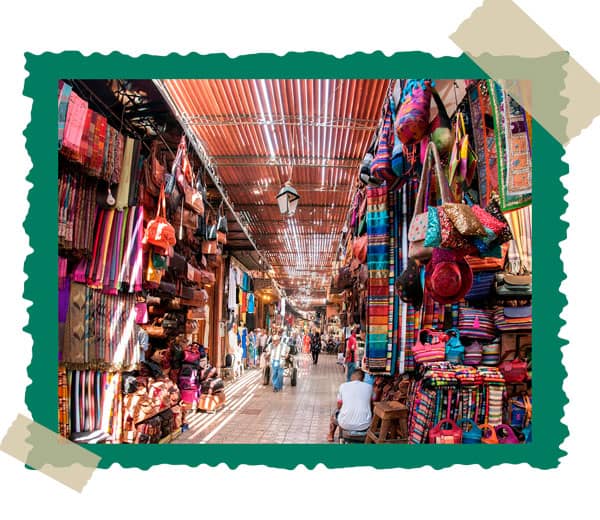
2. Fes – Fes el-Bali & the Chouara Tanneries
If Marrakech is lively, then Fes el-Bali, the ancient medina of Fes, is intense. This is Morocco’s spiritual and cultural capital, and its souks reflect that depth. Fes el-Bali is one of the world’s largest car-free urban zones, a living medieval city where donkeys still carry goods through tight, winding passages.
The Chouara Tanneries are one of the top attractions, where centuries-old methods are still used to dye and cure leather in large vats. It’s both visually striking and pungent, but completely fascinating.
What to buy:
- Hand-dyed leather goods (bags, jackets, poufs)
- Brass and copperware
- Mosaic tiles and traditional ceramics
- Fine embroidery and caftans
Experience tip: Hire a local guide here. The souk is a true maze, and a guide can help you uncover hidden artisan workshops and explain the significance of different quarters.

Ready to Explore Morocco’s Souks?
Step into the colorful world of Moroccan souks, where spices, textiles, lanterns, and local treasures fill every corner. Wander through historic medinas, meet skilled artisans, and experience the vibrant heart of Moroccan culture. There’s no better way to shop, explore, and connect with tradition.
3. Chefchaouen – Artisanal Market in the Blue City
Nestled in the Rif Mountains, Chefchaouen is known for its cool mountain air and its charming blue-washed medina. The souk here is far more relaxed than in the bigger cities, making it perfect for a slow, enjoyable shopping experience.
You’ll find many products unique to the region, including woolen goods, natural soaps, and handmade jewelry. The vendors are friendly, and prices are often lower than in more touristy areas.
What to buy:
- Woven blankets and ponchos
- Goat cheese and mountain honey
- Handmade soaps and argan products
- Locally produced olive oil
Experience tip: Combine a stroll through the market with a short hike to the Spanish Mosque for panoramic views of the blue city at sunset.

4. Essaouira – Medina and Fish Market
Essaouira, on Morocco’s Atlantic coast, offers a breezy change of pace with its relaxed, artsy souk scene. The medina is compact and easy to navigate, filled with galleries, wood workshops, and spice vendors. The town is also famous for thuya wood carving — a local specialty.
The fish market near the port is an experience in itself: choose your seafood straight from the stalls and have it grilled on the spot.
What to buy:
- Argan oil (from women’s cooperatives)
- Wooden bowls, boxes, and home decor
- Local jewelry and artwork
- Sea salt, herbs, and fresh fish
Experience tip: Visit on a Thursday or Sunday when the local markets are liveliest and the surrounding villages come to town.
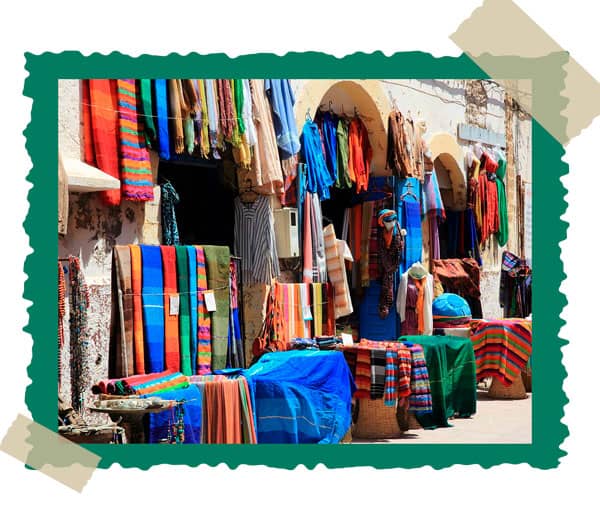
5. Rabat – Souk As-Sebbat
Morocco’s capital may be more modern, but Souk As-Sebbat in the heart of Rabat’s medina remains a hidden gem. It’s cleaner and less hectic than other cities, offering a more laid-back and authentic feel. This is a great place to see how locals shop without the overwhelming tourist pressure.
What to buy:
- High-quality leather shoes and belts
- Traditional garments (djellabas and kaftans)
- Gold and silver jewelry
- Spices and household goods
Experience tip: Combine a visit to the souk with a walk through the nearby Kasbah of the Udayas — a peaceful, blue-and-white neighborhood with coastal views.
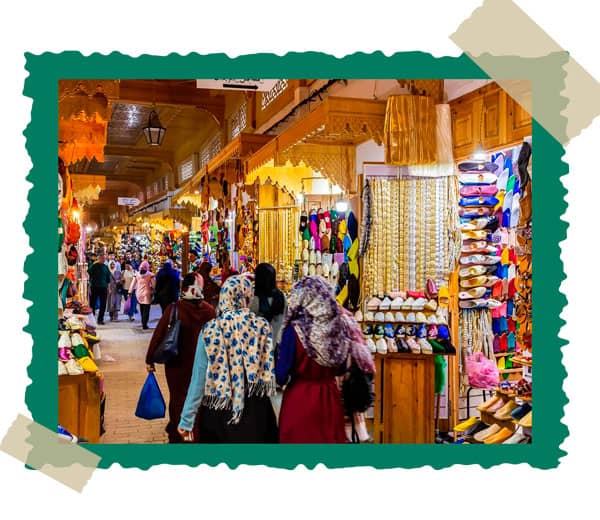
6. Tangier – Grand Socco & Petit Socco
Tangier, where Europe and Africa almost touch, offers a unique blend of Moroccan and European influence. The Grand Socco (big square) is the main gateway into the medina, while the Petit Socco offers smaller shops and cafés with a nostalgic charm.
This city has long attracted writers and artists, and its souks reflect that creative energy — from antique shops to book stalls and spice emporiums.
What to buy:
- Vintage books and art prints
- Handwoven textiles
- Kaftans and scarves
- Moroccan teas and herbal blends
Experience tip: Stop by Café Tingis in the Petit Socco for a mint tea and people-watching in true Tangier style.
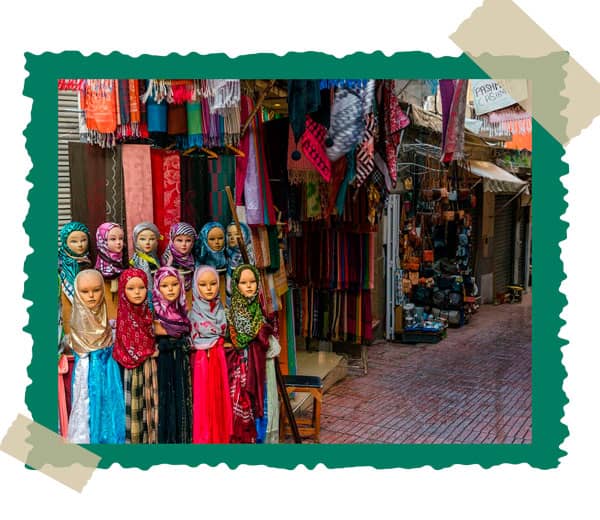
What to Buy in Moroccan Souks
Shopping in Moroccan souks is a sensory delight not just for what you see, but for what you touch, smell, and taste. These markets offer an astonishing variety of handcrafted and locally sourced goods, each with its own story, regional identity, and cultural significance. Whether you’re on the hunt for decor, fashion, food, or gifts, here’s what to look out for:
1. Handicrafts and Home Decor
Morocco is renowned for its skilled artisans, many of whom belong to guilds that pass down their techniques from generation to generation. Souks are the best place to find unique, handmade items that reflect Morocco’s diverse cultural heritage.
Top Picks:
Berber rugs (kilims and Beni Ourain) – Wool or cotton rugs, handwoven in mountain villages; each one tells a symbolic story through its patterns.
Lanterns and lamps – Intricately cut metal or colored glass, perfect for ambient lighting.
Tagines and ceramics – Painted by hand with traditional geometric or floral designs, often in signature colors like cobalt blue or saffron yellow.
Poufs and ottomans – Usually made of dyed leather, often sold unstuffed for easy transport.
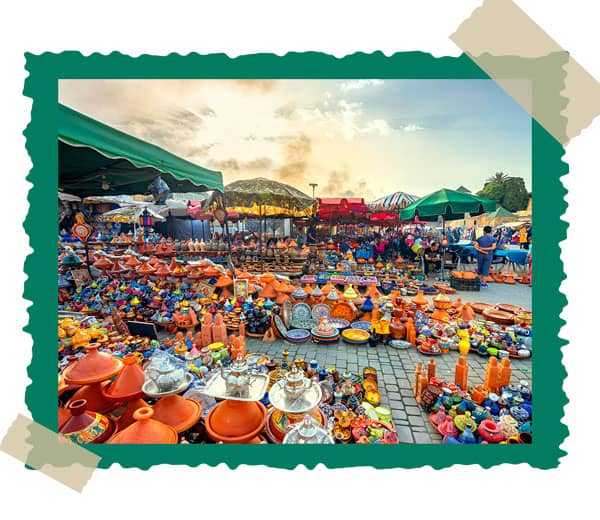
2. Textiles and Fashion
Moroccan clothing and textiles combine tradition with vibrant design. From flowing garments to finely embroidered pieces, the craftsmanship is both stylish and deeply cultural.
Top Picks:
Djellabas and kaftans – Traditional Moroccan robes, often decorated with elaborate embroidery or gold thread.
Scarves and shawls – Lightweight and often made from cotton or silk, perfect for sun protection or modesty when needed.
Babouches (slippers) – Soft leather shoes, sometimes beaded or stitched with pointed toes, in a rainbow of colors.
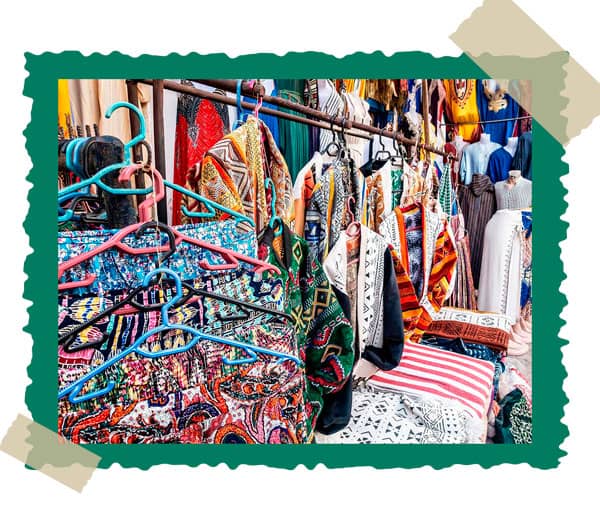
3. Spices and Culinary Goods
No trip to a Moroccan market is complete without exploring the spice stalls. Vendors often display their spices in towering cones of color, filling the air with intoxicating aromas.
Top Picks:
Ras el hanout – A complex spice blend often containing 20+ ingredients, used in tagines and stews.
Saffron – One of Morocco’s most prized exports, especially from the Taliouine region.
Preserved lemons and olives – Essential to Moroccan cooking, and available in countless varieties.
Herbal teas – Especially mint, often blended with wormwood, verbena, or rose petals.
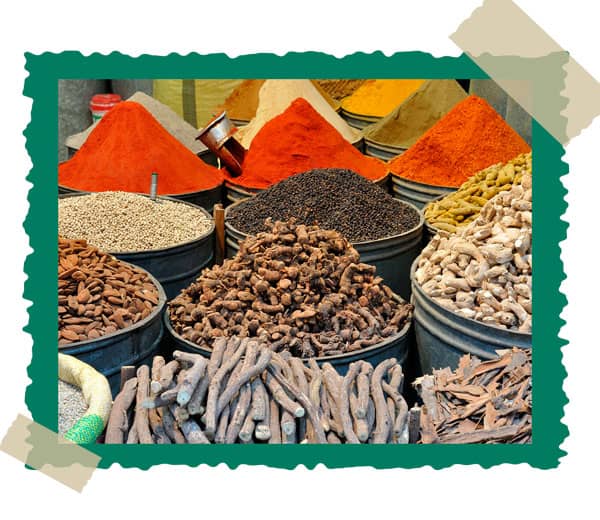
4. Natural Beauty Products
Morocco’s natural resources have made it a center for high-quality beauty products, many of which are produced by local cooperatives, particularly those run by women.
Top Picks:
Argan oil – Known as “liquid gold,” this antioxidant-rich oil is used for both skin and hair.
Black soap (beldi soap) – A plant-based cleansing paste made from olive oil, often used in hammams (traditional Moroccan baths).
Rhassoul clay – A mineral-rich clay from the Atlas Mountains, used as a face or body mask.
Rose water – Often produced in the Valley of Roses, used as a toner or natural perfume.
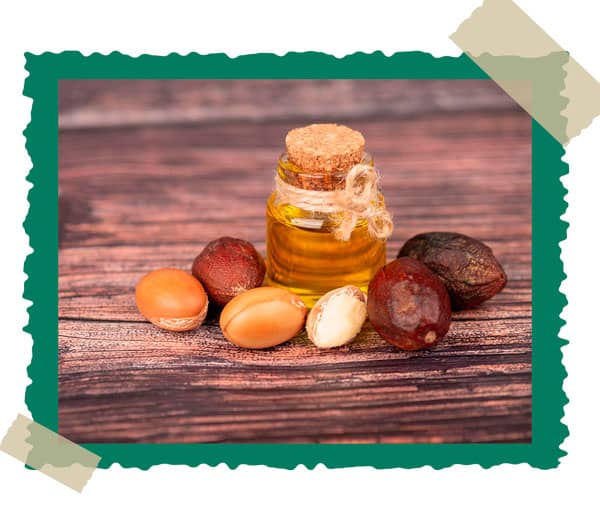
5. Jewelry and Accessories
Moroccan jewelry is bold, beautiful, and often symbolic, reflecting a mix of Amazigh (Berber), Arab, and Andalusian influences.
Top Picks:
Silver bracelets and necklaces – Often engraved with tribal motifs.
Amber, coral, and turquoise beads – Used in traditional Amazigh adornments.
Filigree work – Delicate silver wire crafted into intricate shapes, especially in Fes and Tiznit.
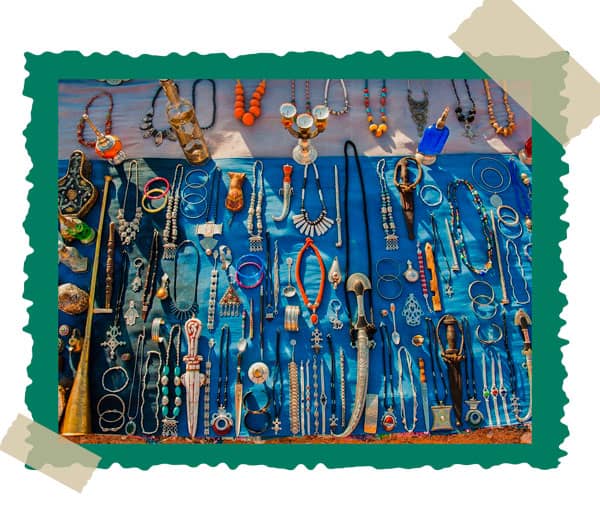
6. Unique Regional Products
Each region of Morocco has something special to offer:
Chefchaouen: Woven blankets, wool garments, goat cheese
Essaouira: Argan oil, thuya wood boxes, artisan jewelry
Fes: Traditional ceramics, copperware, fine leather goods
Marrakech: Spices, textiles, rugs, and metalwork
Tip: If you fall in love with a large item (like a carpet or lamp), many shops offer international shipping.
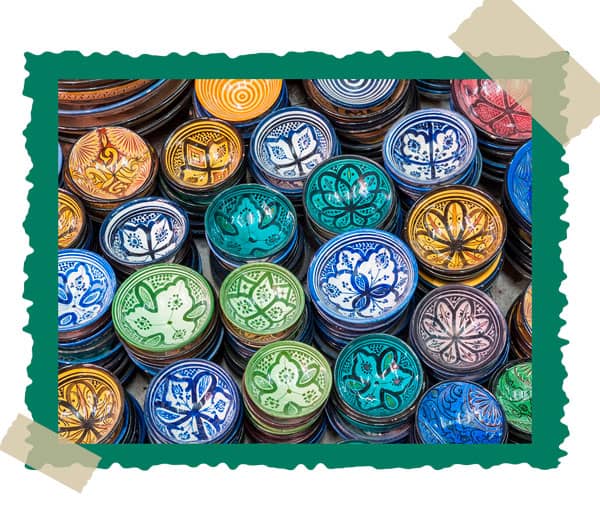
Ready to Explore Morocco’s Souks?
Step into the colorful world of Moroccan souks, where spices, textiles, lanterns, and local treasures fill every corner. Wander through historic medinas, meet skilled artisans, and experience the vibrant heart of Moroccan culture. There’s no better way to shop, explore, and connect with tradition.
Supporting Local Artisans
One of the most meaningful aspects of shopping in Moroccan souks is the opportunity to support local artisans many of whom are preserving centuries-old traditions in weaving, metalwork, leather crafting, pottery, and more. By making mindful choices, travelers can ensure their money goes toward sustaining these communities and crafts.
1. Why Buying Direct Matters
In many Moroccan souks, you’ll find items sold both by middlemen and by the artisans themselves. When you buy directly from the person who made the item, your purchase contributes more significantly to their livelihood. You’re not just buying a product, you’re honoring a craft, a story, and often a family tradition.
Handmade goods may cost a bit more than mass-produced ones, but their quality and cultural value are immeasurable. Plus, you’re more likely to walk away with something unique that reflects the soul of Morocco.
2. Look for Artisan Cooperatives
Throughout Morocco, there are artisan cooperatives particularly in rural areas and smaller cities that aim to protect traditional crafts while empowering local communities. These co-ops often involve women’s groups, who create everything from hand woven carpets to organic argan oil.
Buying from a cooperative ensures:
- Fair wages for artisans
- Transparent sourcing
- Better quality control
- Cultural preservation
Notable examples:
- Tamegroute pottery cooperatives in the south
- Argan oil cooperatives run by Amazigh women near Essaouira and Agadir
- Carpet cooperatives in the Atlas Mountains and the Taznakht region
3. How to Spot Authentic Handcrafted Goods
While Moroccan souks are filled with beautiful items, not everything is handmade. Mass-produced goods, often imported or factory-made, can look similar but lack the quality and uniqueness of artisan pieces.
Tips to identify the real deal:
- Check for imperfections – Handmade items are rarely flawless; minor asymmetries are often a sign of authenticity.
- Ask questions – Inquire about the maker, materials, or technique. Knowledgeable answers usually indicate a genuine product.
- Observe the process – In many workshops, you can watch artisans at work. If a shop hides its process, be cautious.
- Feel the material – Real leather, wool, metal, or clay has a weight and texture that’s hard to fake.
4. Be Respectful of Time and Effort
Haggling is part of the culture, but it’s important to remain fair. Negotiating a price should be playful, not aggressive. Remember: what might seem like a few dirhams to you could represent a day’s earnings for the seller.
If you’re particularly impressed by an artisan’s work, don’t hesitate to offer a tip or express gratitude. Even small gestures like taking interest in their process can build mutual respect.
5. Stories Matter — Ask and Listen
Every handmade item in a souk has a story behind it. That brass lantern you admire? It might have taken a week to shape and etch by hand. That scarf? It could be dyed using natural pigments passed down through generations.
When you ask artisans about their work, you’re doing more than shopping you’re engaging with culture, history, and humanity. These are the memories you’ll take home long after the product itself has settled into your living room.
Ready to Explore Morocco’s Souks?
Step into the colorful world of Moroccan souks, where spices, textiles, lanterns, and local treasures fill every corner. Wander through historic medinas, meet skilled artisans, and experience the vibrant heart of Moroccan culture. There’s no better way to shop, explore, and connect with tradition.
Cultural Etiquette in the Souks
While Moroccan souks are a lively and welcoming space, it’s important for visitors to approach them with respect for the local culture and traditions. Understanding a few key customs and etiquette can go a long way in making your shopping experience both enjoyable and enriching.
1. Respect the Art of Bargaining
Bargaining is a part of daily life in Moroccan souks, but it should always be done respectfully. The process is not seen as confrontational, but as an enjoyable and communal activity. Keep the atmosphere light and friendly, and don’t take things personally if a vendor is persistent.
Do’s and Don’ts:
Do start low, vendors expect you to negotiate, so start at around half the asking price.
Don’t be overly aggressive or dismissive. The goal is a fair exchange, not to “win” the deal.
Do keep a sense of humor to make the experience fun for both you and the seller.
Don’t get upset if the vendor doesn’t immediately accept your counter offer they may hold out for a bit longer, but in the end, a mutual agreement is usually reached.
2. How to Interact with Vendors
In Moroccan souks, you’ll often encounter vendors who approach you with offers of help or products, especially if you’re browsing in a touristy area. While it’s generally okay to listen and engage, it’s important to maintain a respectful distance, especially if you’re not interested in buying.
Helpful Tips:
Be polite but firm when you decline an offer. A simple “La, shukran” (No, thank you) is usually enough.
Engage in conversation if you’re curious or want to learn more about an item, but be mindful of not wasting the vendor’s time if you’re not genuinely interested in purchasing.
Avoid overly haggling in a way that’s disrespectful. If you’re offered a price that seems too high, kindly ask for a discount without making the vendor feel devalued.
3. Dress Modestly and Respect Local Customs
Morocco is a predominantly Muslim country, and while the atmosphere in tourist areas can be relaxed, it’s important to dress modestly when visiting souks, especially in more rural areas. While wearing shorts or sleeveless tops is common in Western countries, it might make locals uncomfortable in Morocco.
For Women:
Opt for clothing that covers the shoulders, cleavage, and knees.
Loose-fitting tops and long skirts or pants are a good choice.
In rural or traditional areas, consider wearing a scarf to cover your head if you want to show extra respect.
For Men:
While it’s acceptable for men to wear shorts, it’s still courteous to cover your upper body with a t-shirt or light shirt.
Avoid wearing overly flashy or revealing clothing that might draw attention.
4. Be Mindful of Personal Space
Moroccans tend to have a closer sense of personal space than what many Westerners might be accustomed to. In the tight alleys and busy stalls of souks, it’s common for people to stand close to one another. However, always be aware of the body language of the locals if they step back, respect their space.
When photographing people, it’s courteous to ask for permission first. Some people, particularly older women or vendors, may prefer not to have their picture taken. If you’re in a situation where someone seems uncomfortable, don’t insist.
5. Keep an Eye on Your Belongings
Souks can be crowded, especially in larger cities like Marrakech, and while they are generally safe, it’s important to be cautious. Pickpockets do exist, and it’s wise to keep your belongings close.
Safety Tips:
Use a money belt or an anti-theft backpack to store your valuables.
Don’t carry all your cash in one place and separate it into different pockets or bags.
Keep your phone, camera, and wallet secure and avoid flashing expensive items like jewelry or electronics.
6. Show Gratitude and Be Patient
Moroccan people are incredibly hospitable, and even if you’re not purchasing anything, showing respect and gratitude will go a long way. Saying “thank you” (“shukran”) after a conversation or interaction, even if you don’t make a purchase, is a simple but meaningful gesture.
Also, remember that the pace of life in Moroccan souks can be slower than what you might be used to. Take your time, enjoy the experience, and don’t rush your interactions with vendors. The slow rhythm is part of what makes the souks so special.
Conclusion
Exploring the souks of Morocco is an unforgettable experience that offers more than just shopping it’s a chance to connect with the country’s rich culture, traditions, and craftsmanship. From the vibrant colors and scents to the friendly faces and timeless art forms, these markets are a reflection of Morocco’s soul. By shopping mindfully and respecting local customs, you’ll not only take home unique souvenirs but also support the artisans who keep these traditions alive. So, whether you’re in the bustling alleys of Marrakech or the tranquil medina of Chefchaouen, embrace the adventure and enjoy the magic of Morocco’s souks.
